Philadelphia Car Accident Lawyer
Car accidents are common on roads and highways and can have serious consequences for those involved. They can cause physical injuries, deadly injuries, property damage, and the unfortunate loss of life. In some cases, liability is clear, whereas in others, it may be challenging.
If you or a family member has been injured in a car accident, an experienced car accident lawyer in Philadelphia can help. To find the right lawyer, you can check out the local listings of lawyers and the Bar Association in your city.
However, you can also consult with our lawyer right here at the Law Offices of Samuel Fishman. Our law firm can help you safeguard your rights and recoup full and fair compensation from a liable party. These lawyers often have represented many Philadelphia car accident claims and personal injury cases, along with having the knowledge and experience to help our clients get the value and compensation they deserve.
Injured in a Philadelphia car accident? Our experienced team of car accident attorneys in Pennsylvania is here to help you obtain compensation for your lost wages and medical expenses. Contact our lawyer now by calling (267) 744-4689.
What To Do After A Car Accident in Philadelphia
What you do after a motor vehicle accident can be important if you later decide to file a claim for your injuries, damage to your automobile, and other losses. The following steps may also be needed to protect your legal rights and ensure the health and well-being of others after an accident in Philadelphia.
7 Steps To Take After a Philadelphia Car Accident
- Check your injuries and other passengers: In the immediate aftermath of an accident, it is important to ensure that you and your family and loved ones are safe and there are no injuries. If anyone, especially a child, is injured, you may need to call emergency medical services.
- Seek medical treatment: Going for a medical checkup with a doctor as soon as possible after a car accident in Pennsylvania is crucial for your recovery. Some injuries aren’t always apparent right away and can take weeks or months to begin showing symptoms. It’s important to pay attention to how you feel and communicate any discomfort or changes to your healthcare provider. Setting up a medical visit can also allow you to gain a better sense of how long it might take to treat your injuries.
- File and request a copy of a police report: To get a police report from an officer will be essential if you decide to file a claim. They often contain a detailed description of the crash and any injuries. Furthermore, authorities will sometimes note which driver was at fault for the accident and issue citations for any laws they are suspected of violating in their investigation. Your insurance company may use this information to prove whether you were at any fault. This will also help your lawyer gather evidence and proof for the entire case.
- Call your insurance company: Whether you were at fault or not in a car accident in Pennsylvania, it may be necessary to contact your auto accident insurance company about an accident and notify them about any damage or injuries. Taking pictures of the accident scene can also be valuable evidence moving forward.
- Exchange information: Exchange or write down contact information and insurance information with other drivers involved in the accident. Although insurance information is required to be up-to-date, it’s important to make sure that the defendant’s information, such as their address and phone number and insured vehicle, is accurate. Also take pictures of the vehicle and the scene for future proof and evidence.
- Keep track of your money: Keeping track of your expenses, including medical bills, pay stubs that show you missed work and earnings, and mechanic bills that are related to your accident can help if you receive compensation if you file a claim.
- Contact an Attorney: If you have been injured in a car accident, hiring an experienced Philadelphia car accident attorney can also be an important step. Our attorneys can provide legal advice and representation and offer you guidance on how you may want to proceed. Communication with any of our car accident attorneys experts is confidential, and your privacy is secured with us.
Our Settlements

$1.7 Million

$500 K

$1.5 Million

$750 K
When To Hire A Philadelphia Car Accident Lawyer
When you or a loved one are involved in a Philadelphia accident, the aftermath can be challenging. You may have suffered serious and life-altering injuries or are facing expensive repairs for damages. Having a Philadelphia personal injury lawyer on your side from the start can help make the legal process easier. This is especially true for those who were injured due to another driver’s negligence and are left with costly medical bills and other expenses.
A car accident can result in serious injury or even death for anyone who is involved in the crash, and Philadelphia car accident lawyers can assist those who have experienced loss. Additionally these lawyers possess an understanding of the Pennsylvania laws related to car accident cases and can give you options as to which actions can be taken to recover damages worth considering.
If an insurance company denies your claim, it may be possible for your car accident attorney to file a new claim case to try again. However, it is important to ensure that you and your lawyer have all the necessary documents, video camera and photographic evidence, records and information, including statements from witnesses and details about where the accident took place, accident report, medical reports, before submitting a new claim to avoid making the same mistakes that may have led to the initial rejection resulting in denial of your claim.
An experienced Philadelphia car accident attorney may be able to assist you with this process by reviewing your claim and aiding in the proper construction of the necessary information in the first instance.
These lawyers can also help you realize any potential issues with your claim that may have led to the rejection and advise you on how to address these issues. In some cases, an appeal may be necessary if your claim is denied a second time. It’s important to note that being prepared and having a strong and proper understanding of the rules and procedures for filing insurance claims can vary depending on the insurance company, the type of claim, and the specific circumstances.
Therefore, it may be necessary to discuss with an experienced car accident attorney who is familiar with the relevant laws and regulations in your area for your case immediately.
How Much Does It Cost To Hire A Car Accident Lawyer?
If you have been hurt in a car crash and the other driver was at fault, you may be able to file a “third-party” claim against the insurance company of the at-fault driver. The process can be complicated though, so it is important to retain an experienced car accident lawyer.
Car accident lawyers typically get paid on a contingency fee basis. This means that they only get paid if you obtain some form of compensation. Generally, the large majority of car accident lawyers charge between 33 to 45 percent of the final settlement or court or arbitration award. The rate varies depending on factors such as the complexity and novelty of the case, the time and labor required, and the experience, reputation, and ability of the lawyer.
11 Common kinds of car accidents are:
- Rear-end collisions
- Side-impact collisions
- Head-on collisions
- Rollovers accidents
- Sideswipes accidents
- Texting while driving accidents
- Single-vehicle accidents
- Multi-vehicle accidents
- Blind spot collisions
- Low-speed crashes
- Merging accidents
Rear-End Collisions:
One of the most common car incidents is when someone is rear-ended. As you might expect, they happen when the front of one vehicle collides with the back of another vehicle. There can be several factors that lead to rear-end accidents, including inattentive or distracted driving, intoxicated driving, aggressive driving and the inability to stop due to inclement weather. Rear-end situations can also happen due to the following reasons:
- A distracted driver fails to see a red light and does not stop
- A driver approaches an intersection and anticipates a green light when another car is stopped for a red light
- A driver speeds up at yellow light, but the car in front of them has already stopped
Side-Impact Collisions:
Side-impact incidents happen when an automobile collides with another automobile’s front or rear end. These are also known as T-bone situations or right- or left-impact situations. Side impact events can be dangerous because drivers are often unaware of approaching cars that may be unable to stop in time. Therefore, they can cause extensive and potentially life-threatening injuries.
According to the recent information on National Highway Traffic Safety Administration (NHTSA), side-impact events have become the second leading cause of fatalities and debilitating injuries in auto accidents. These accidents are dangerous due to the absence of deep metal structures between the automobile being impacted and the occupant.
Due to this, the door can collapse into the driver or the passengers at a high speed. The purpose of considering the impact of the side impact events can depend on multiple factors such as location, speed, and the size of the car.
Head-On Collisions:
Head-on incidents are one of the most dangerous types of crashes. These happen when the front ends of two automobiles collide in traffic and hit each other from opposite directions. Some causes of car accidents with head-on incidents are distracted driving, passing improperly, reckless driving, and others. Due to the immense force generated by these accidents, devastating injuries and fatalities can occur soon.
Rollovers Accident:
Rollover accidents happen when one automobile overturns by 90 degrees on its side. Due to the conducted impact and loss of control the driver experiences, a rollover may lead to the tumbling of the automobile more than once.
People who have sustained injuries in a rollover car accident may have to face hefty medical and automobile repair expenses. SUVs are more susceptible to rollover crashes because they have a higher center of gravity and narrower track width compared to passenger cars. Drivers are also more likely to overcorrect when they believe they’ve lost control of their SUV, which can lead to rollovers.
A 2019 National Highway Traffic Safety Administration report showed that fatalities caused due to SUVs were highest at 41%, followed by pickups at 38%. Accidents that led to fatal injuries involving vans were 25%, followed by 20% of those involving cars.
Sideswipes Accidents:
A sideswipe accident is a situation precipitated by cars traveling in a similar direction. In addition, in this accident, the left side of the vehicle collides with the left side of another vehicle. These accidents typically happen when a driver cannot judge the speed and position relative to another automobile.
Texting While Driving Accidents:
As people are surrounded by technology and cell phones, the probability of accidents increases. When a driver loses focus and uses their phone while driving, it may lead to a serious accident, endangering the safety of pedestrians and cyclists.
Single-Vehicle Accidents:
A single-vehicle incident is a crash that involves only one automobile. This can include when a vehicle collides with something, such as debris, animals, or road barriers. It can also include when a vehicle runs off the road and crashes. Despite not involving other motorists, bicycle accidents, motor vehicle accidents, and single-vehicle accidents can still lead to serious injuries to the driver and their passengers.
Multi-Vehicle Accidents:
These kinds of accidents involve three or more vehicles. They usually occur on high-capacity or high-speed highways and roads. They are sometimes also referred to as pile-ups. Because several vehicles are often involved, these accidents can lead to multiple injuries and fatalities.
Blind Spot Collisions:
A blind spot incident is another kind of car accident that happens when a car strikes another that is located in the driver’s “blind spot.” This is an area around the automobile that is not visible to the driver in the side and rear view mirrors.
Blind spot collisions frequently happen when drivers change lanes without checking their blind spot or when they fail to see another automobile that is driving in their blind spot. This kind of accident can be particularly dangerous because the driver who is struck may not have had time to react and avoid the situation.
Low-speed crashes:
Low-speed accidents are those that occur when cars travel at a relatively low speed, typically around 10 to 15 MPH. Even at low speeds, these kinds of incidents can still result in damage to the vehicles involved, as well as injuries to the drivers and passengers. It is possible that the force of such an incident can result in whiplash, back injuries, or other soft tissue injuries. Most construction accidents or public school district area crashes fall under low-speed crashes.
Merging Accidents:
Accidents which occur when a car is merging and collides with an approaching vehicle while trying to move into a lane is considered a merging accident. Merging accidents can result in sideswipes and rear-end events.
A car accident can be an absolute nightmare. The physical pain, the emotional toll, the financial strain—all of these aspects can be difficult to recover from. You may think that you have no other option but to deal with it on your own, but consulting a Philadelphia car accident attorney can provide you with potential solutions to this problem.
Common Causes Of Philadelphia Car Accidents
Most car accidents are caused by human error. Distracted driving and driving under the influence of drugs or alcohol are among the leading reasons for car accidents. Regardless of how good of a driver you are, an accident can still happen to you if another driver is negligent. Driving is a significant responsibility, yet irresponsible behaviors can result in serious accidents and injuries. Some of the most common behaviors may include:
- Speeding
- Violation of other traffic laws
- Careless and distracted driving
- Driving while impaired, including prescription medication
- Drunk driving,etc.
Speeding
Speeding is one of the most common reasons for Philadelphia car accidents. It’s not uncommon to share the road with drivers who knowingly or unknowingly drive faster than the speed limit, even if it results in no incidents. However, this is not always the case. Speeding increases the chance of losing control of an automobile and increases the severity of any accidents that do occur. Reaction times are also slower when driving at high speeds, which can make it difficult to avoid an accident.
Violation Of Other Traffic Laws
Not following traffic rules can also result in serious consequences. Nearly 40% of car accidents happen at intersections, according to NHTSA. Failure to stop at red lights or ignoring stop signs can result in an accident with oncoming vehicles, as well as with pedestrians.
Tailgating, or following too closely, is another traffic rule that drivers don’t always follow. Pennsylvania requires drivers to maintain a safe distance behind other automobiles.
Careless Driving
Careless driving is another major reason for car accidents. This can encompass numerous different actions, such as texting while driving, talking on the phone, or simply not paying attention to the road. It is important to be alert and aware of your surroundings and focus on the task at hand when operating an automobile. Any nature of distraction can result in catastrophic accidents.
Drowsy Driving
Drowsy driving is also another common cause of car accidents. A widely cited National Sleep Foundation study showed that going 18 hours or longer without sleep impairs driving performance. In fact, at 18 hours, it had a similar impairment as drunk driving with a blood alcohol content (BAC) of .05%, just under the legal limit. However, after a person went 24 hours without sleep, their driving performance was similar to having a BAC of .10%, which is higher than the .08% BAC limit in Pennsylvania and in most other states.
Like consuming alcohol, fatigue can impair a driver’s reaction time, judgment, and ability to pay attention. This makes them more prone to instigate or be involved in a car accident
Your lawyer will investigate the accident to try and establish blame and engage in negotiations with the insurance companies and defending counsel.
It is important that negligent drivers are held responsible for these accidents, as the outcomes of such an accident can be devastating. Someone can get severely hurt or even killed. Personal injury claims are safeguards that deter these kinds of incidents from happening again. Hire a lawyer today!
Types Of Car Accident Injuries
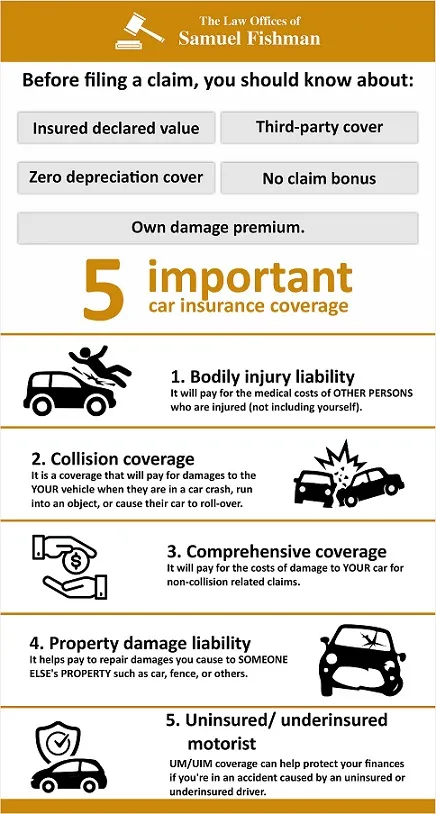
- Brain Injury: Brain injuries may involve blows to the head in which the brain is impacted along with the skull. Accidents may lead to either mild, moderate, or severe traumatic brain injuries, depending on the severity of the accident.
- Spinal cord injuries: Some accidents can lead to mild bruising, while others may cause severe injuries leading to paralysis and quadriplegia. These debilitating medical conditions may require lifetime care.
- Amputation: Sometimes, car accident victims may even lose a limb.
- Internal injuries: These kinds of injuries are hard to diagnose as they are unseen and may require immediate medical attention.
- Burn Injuries: Burn injuries may transform the victim’s life completely. These can be caused due to airbag burns or car fires and may lead to serious damage to the skin.
- Lacerations: A laceration is a kind of wound that happens when the skin is cut or torn open. In a car accident, this can be triggered by sharp objects, such as glass or metal, or occur due to blunt trauma. These may require medical attention, including stitches or staples, to heal the wound.
- Broken Bones: Fractured bones are one of the most common outcomes of car accidents when the victim gets hit by a steering wheel or other objects. Sometimes the force of an accident can lead to bones breaking. In moderate collisions, hand fractures and wrist fractures are also common.
In the event of serious car crashes, fatalities are the ultimate consequence of automobile accidents, which could prompt you to collect that justice through a wrongful death case. But even in crashes that don’t lead to death, medical expenses can be hefty, and some may require long-term medical care for injuries they suffered in a car accident.
How Much Is My Philadelphia Accident Claim Worth?
The amount of your car accident claim will depend on various factors such as the type of insurance you have, the severity of your injuries, and your damages. Factors influencing the car accident claim value include:
- The Severity of Your Injuries: If your injuries are severe, you will likely need extensive medical care, resulting in more medical bills, missed work due to medical appointments, and an overall reduction in your quality of life. As severe injuries may increase your chances of receiving greater compensation.
- Accident Details and Fault: It is important to know how the accident happened and to identify the party to whom liability should be attributed. Depending on the accident, liability may be imputed to multiple parties. Knowing which parties to pursue is critical when it comes to getting compensation.
- Insurance Coverage: When it comes to car accident claims, the insurance coverage the driver has selected is a key point of consideration. Whether a driver has selected a full tort or limited tort policy will dictate whether the injured party may sue for damages, including pain and suffering, without any limitations. If a driver has opted for the full tort policy they will be able to sue for noneconomic damages such as pain and suffering. If a driver has opted for a limited tort policy, however, they may only be able to recover damages for pain and suffering if their injuries are legally severe and subject to certain exceptions that provide for full tort coverage notwithstanding the election of limited tort coverage.
- For example, (1) where the party that caused the accident is convicted or accepts Accelerated Rehabilitative Disposition (ARD) for driving under the influence of alcohol or a controlled substance in that accident; (2) the at-fault party was an out-of-state driver; (3) or they did not maintain financial responsibility as required Title 75, the party may be able to avail themselves of the benefits of a full tort policy. There are other exceptions as well, so it is important to speak with an experienced car accident lawyer to determine whether one of these exceptions may apply to you. .
- Life Circumstances: Some other factors that impact the value of a Philadelphia Accident Claim, are whether the injured party sustained lost wages as the result of the accident; and whether it has impacted the relationship with the spouse of the injured party resulting in a claim for loss of consortium.
- Age and Health of the Victim at the Time of the Accident: The age and health of the victim can impact the time of your recovery and the potential for future earnings as well. The various factors that are considered when determining the value of a claim are quite numerous making calculation a complicated matter. As such, it is important to speak with an experienced personal injury lawyer who can guide you through the claims process, and if necessary represent you in court if the case goes to trial. However, it should be noted that the majority of personal injury cases result in an out-of-court settlement.
It may be challenging to try to settle a lawsuit with the insurance company or another party’s lawyer without the help of an experienced personal injury attorney. Our lawyers can collect evidence and put together a claim for you; negotiate with the insurance companies; and represent you in any court or arbitration proceeding. When you retain a legal profession you increase your chance of obtaining the compensation you deserve.
Statistics Of Car Accidents In Philadelphia
According to Pennsylvania Department of Transportation (PennDOT), in the year 2022, the fatal crashes were 1092, Property Damage Only (PDO) crashes were 65,778, and the number of injury crashes was 49,068. In 2022, the fatalities were 1,179, Pennsylvania’s 4th lowest number of deaths.
Pennsylvania Car Accident Statistics 2021
In 2021, most individuals involved in crashes in Pennsylvania emerged without injuries. However, it’s concerning that there were 1,230 fatalities during that year, marking the highest number of motor vehicle crash-related deaths in the state since 2012.
Latest Trend In Hit And Run
For the third consecutive year, the number of individuals with fatal injuries caused by drivers who fled the scene in Philadelphia has remained twice as high as in 2019. In 2022, hit-and-run incidents reached an unprecedented peak, signifying an alarming trend where hit-and-runs account for a progressively more significant percentage of total fatalities, surging from approximately 20 percent in 2020 to 28 percent in 2022 as recorded.
Pennsylvania Accident In a Car Statistics 2020
Philadelphia is the fifth most populated city across the country. The city is also one of the most densely populated in the U.S. According to the United States Census Bureau, Philadelphia had a population density of 11,609 people per square mile in 2020, which is higher than the national average population density of 93 people per square mile. This in turn means more drivers and the potential for accidents.
According to the Pennsylvania Department of Transportation (PennDOT), nearly 10,108 car accidents were reported in Philadelphia in 2020. That’s just more than 27 accidents each day. Historically, Philadelphia has the most car accidents in the state due to being the most populous city in the state.
Pennsylvania Auto Accident Fatalities 2019
In 2019, the percentage of total traffic fatalities were passenger car occupants was 34%. Light truck occupants accounted for 28% of fatalities, non-occupants comprised 20%, motorcycle accidents were 14%, and occupants of large trucks, buses, or other vehicles accounted for 4% of deaths. The takeaway from these figures above demonstrates that the occupants of passenger cars make up greater than one-third of all fatal accidents.
Staying Safe on the Streets: The Most Dangerous Intersections for Car Accidents in Philadelphia
One of the most dangerous intersections as measured by the number of car accidents in Philadelphia is Grant Avenue and Roosevelt Boulevard. As this is one of the busiest intersections in Pennsylvania, efforts are made to enhance safety, such as by installing red-light cameras. However, it has yet to be seen whether these measures have been effective in reducing the number of accidents in this location.
Here are some other dangerous intersections known for Philadelphia car accidents:
- Grant Avenue and Southwest 49th Street: Located in Southwest Philadelphia, the intersection of Grant Avenue and Southwest 49th Street is known for its high-volume traffic. . Fatalities are not common in this location. However, the number of car accidents that occur at this intersection contribute greatly to overall car accident statistics.
- Red Lion Road and Roosevelt Boulevard: Located near Northeast Philadelphia Airport and Bryn Athyn College, Red Lion Road and Roosevelt Boulevard are known for their complicated and confusing traffic patterns.
Ways A Philadelphia Car Accident Lawyer Help You Recover Damages
Damages in personal injury car accident claims can help restore compensation to those who have been hurt in a Philadelphia car accident. The kinds of damages or losses you and your car accident attorney can recover typically are within two areas that includes: economic and non-economic damages.
Economic Damages: Economic damages are a form of damages that aim to compensate an injured victim for often specific monetary and financial losses related to injuries that can be a dollar amount. For example, a $5,000 medical bill for a broken arm and a $5,000 auto repair bill may be among the damages a person seeks. Some other examples of economic damages include:
- Medical expenses
- Loss of income and lost wages
- Loss of future income
- The projected costs of future medical treatment
- Household or domestic expenses
- Property damage
Non-Economic Damages: Depending on the circumstances of a claim, a person who was injured may also pursue compensation for losses that cannot be estimated through monetary calculation. They are known as non-economic damages and can include:
- Pain and suffering
- Permanent disability
- Loss of personal enjoyment
- Humiliation
- Embarrassment
- Disfigurement
- Loss of companionship or consortium
Punitive Damages: In some cases, victims may be awarded punitive damages. These are awarded when a judge or jury deems that a person’s actions were grossly negligent or malicious and serves to punish them for their actions. They are also enacted to deter this kind of behavior from happening again. These monetary penalties are often paid in addition to other forms of damages.
To receive any of these forms of compensation, it must be proven by the plaintiff that the damages in question were caused by the accident or were a consequence of the accident, and it must be proven that the victim was not completely at fault and the defendant driver was responsible. Though, most personal injury cases are more complicated and there can be shared degrees of fault from both parties.
To maximize your recovery, it’s advisable to seek guidance from a knowledgeable Philadelphia car accident attorney for a favorable court order.
Time Limit To Sue After A Car Accident In Pennsylvania
In Pennsylvania, the statute of limitations for filing a civil claim after a car accident is two years from the time a person knew or should have known about their injuries. This also applies to personal injury claims involving medical malpractice, product liability, wrongful death, and other kinds of personal injury law.
Claims against local or state governments are generally shorter. For personal injury claims that involve city, county, or state government, you are required to file a notice that you intend to sue within six months.
If the time specified in the statute of limitations expires, then you may not be able to file a car accident lawsuit in Pennsylvania state court. However, there is a narrow set of exemptions to the statute of limitations.
To avoid the time requirement from lapsing or to determine if your case may fall into one of these exemptions, it is best to consult an auto accident attorney. Your Philadelphia car accident attorney can help you understand whether you can file a personal injury trial after a car accident happened and improve your chances to win the case.
Full Tort Vs. Limited Tort Coverage
In the state of Pennsylvania, insurance coverage companies provide full tort and limited tort options. You may have heard this referred to as “choice no-fault,” which means that drivers can choose between two kinds of coverage: full tort and limited tort.
Full tort covers a broad range of damages, including non-economic damages such as pain and suffering. However, in limited tort, you may not always be able to sue for pain and suffering, so in some cases your own insurer is only responsible for physical injury. However, there are certain exceptions to this.
According to the Pennsylvania Motor Vehicle Responsibility Law 75 Pa. Cons. Stat. § 1705(d), certain exemptions apply when choosing a limited tort policy:
- If the driver who caused the accident was intoxicated or has got a DUI or if he or she agrees to participate in an Accelerated Rehabilitative Disposition (ARD) Program, the limited tort policy does not apply .
- If an uninsured driver precipitated the accident, the victim with injuries will not be bound by limited tort insurance.
- If the car that caused the accident was registered in another state, then limited tort does not apply.
- If the person who sustained injuries was a passenger on a bus, cab, Lyft, Uber, motorcycle, or any other rental automobile, then the victim with injuries is entitled to full tort benefits, which comes into play in such situations.
- If a bicyclist or pedestrian is injured by an automobile, then the injured person is not bound by a limited tort policy.
Despite these exceptions, it’s important to keep in mind that every case is different. Exceptions can vary depending on the severity of the injuries.
Pennsylvania also has modified comparative negligence laws that determine a victim’s compensation that are based on the degree of fault they may have caused.
Because the rules surrounding limited tort options and exemptions can be highly complicated, it may be best to consult with an experienced Philadelphia car accident attorney to understand how they may apply to you and assess the status of your Philadelphia claim. It is simple to retain a lawyer to make this process less stressful.
Uninsured And Underinsured Motorist Coverage
Uninsured motorist protection is additional insurance given to people who are hurt in an accident due to any negligence of an uninsured or unidentified driver.
It is important to have uninsured motorist benefits because although it is against the law to drive without insurance in Pennsylvania, many people do. This field of insurance will cover your medical and hospital bills and other damages if an uninsured driver hits you in Philadelphia.
Underinsured motorist protection is for people hurt in a Philadelphia car accident by someone who does not have enough insurance to cover the victim’s medical costs. It is important to have this kind of insurance because, unfortunately, many people only purchase the minimum amount of insurance required by law. If you are hit by someone with the minimum insurance amount and your damages exceed their coverage, then your underinsured motorist benefits will pay for the difference. To understand in detail contact a lawyer today!
Contact Our Philadelphia Car Accident Attorneys For Legal Help
If you’ve been injured due to someone else’s negligence, it’s essential to consult with an accident lawyer in Philadelphia to understand your legal options and seek rightful compensation. Their role and duty to provide right legal guidance is important for a successful claim.
At Samuel Fishman, our resources in the legal community and diligent team staff with years of experience on your side can increase your chances to maximize an outcome that fully and fairly compensates you for your losses following a Philadelphia car accident. We are proud to mention that we are among the top choice of lawyers in the greater Philadelphia area to handle such cases.
Find us online to read and review our client testimonials and successful track record of personal injury cases. Our Philadelphia attorneys are prepared to go to trial for your case, if necessary. Let our lawyers fight for you and help you plan every step in the process.
By scheduling a lawyer consultation, you can ask one of our lawyers for further validation about your next steps, how much they estimate your claim is worth, and the timeline of your case. Our scope of legal representation extends to not just Philadelphia, but NJ and Delaware as well. They will provide answers to all your queries and guide you through the process.
Car Accident Attorney in Philadelphia
Samuel Fishman
Call our Philadelphia personal injury law firm today at (267) 744-4689 to schedule a free consultation with our car accident attorneys and learn how we can support you financially and legally after an accident in Pennsylvania and build a strong case and secure your compensation settlements. You may also please reach out to us via email for inquiries on the fees for counsel services and your free case evaluations.
Philadelphia Car Accident FAQ
Q. Can You Still Recover Damages If You Were Not Wearing A Seatbelt At The Time Of The Accident?
The answer is yes, you can still recover damages in the event that accident occurs when you did not wear a seatbelt. When one party files a claim for economic damages, the other driver will obtain something known as seat belt defense. Furthermore, an individual may take precautionary measures by wearing a seat belt to avoid or reduce accident injury. Whether you were wearing a seat belt while involved in a car collision or not, you still have the right to pursue damages from the negligent party.
Q. How Do You Go Outside the No-Fault System?
In Pennsylvania, it may be possible to step outside of the no-fault system by filing a third-party claim against a negligent party. Third-party personal injury claims are available in case of bodily injury or other non-economic damages. However, the injury must have occurred and include one of the following.
- Disfigurement;
- Permanent impairment;
- Total disability.
Full-tort benefits also permit Pennsylvanians to bypass the no-fault laws prevailing in the commonwealth. This way, the drivers may pursue compensation for personal damages from the negligent party. Contact and talk to a Philadelphia car accident attorney to know where you stand on your personal injury claim.
Q. What If The At-Fault Driver Doesn’t Have Car Insurance?
If the at-fault driver does not have car insurance, you will need to file a damage claim with your insurance agency/company or file a case against the negligent party. When you suffer losses in an accident, you may expect that the other driver has an insurance policy because it is required in Pennsylvania. However, some drivers may not have insurance, which is why carrying an uninsured motorist option can be helpful in these instances.
Q. Under What Circumstances Are Insurance Claims Rejected?
Your claim will vary depending on your medical expenses and other damages. However, insurance companies will often try to pay you as little as possible. They may also reject your claim due to several reasons, such as:
- Instances in which you were partially or wholly at fault;
- You did not receive a medical evaluation;
- You did not experience any injuries;
- The claim is more than your maximum benefit.
If you provide wrong or misleading information to an insurance company, they may reject your claim and suspend payments until you provide them the requested information. Therefore, it is important to make every effort to provide the correct documentation. Your Philadelphia injury lawyer can also be able to tell and calculate the maximum compensation amount and negotiate with these insurers on your behalf. Dealing with insurance companies is easier with a lawyer.
Q. What Should You Do if You Need a Cash Settlement to Pay Medical Bills?
It may not always be a good idea to accept the first cash settlement that an insurance company offers you. An insurance company may seek to include “full” reimbursement for medical bills while treatment and surgeries are still ongoing, for example.
This may limit your ability to recover other medical bills or other future damages. For this reason, your car accident attorney may advise you to not accept any early settlement amount as it may prevent you from getting a full settlement amount in your case at last. Instead, consider negotiating with the insurance company to ensure that your current and future needs are adequately addressed. Also, getting help from an experienced car accident attorney in Philadelphia can make a big difference in negotiations for everyone who were involved.
Philadelphia Auto Accident Client Review


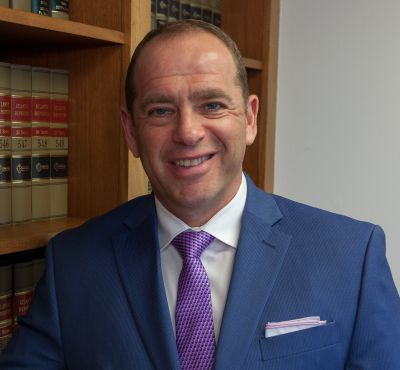

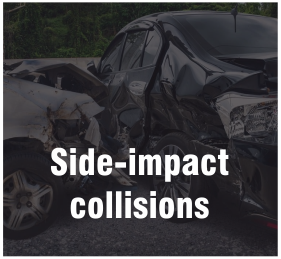
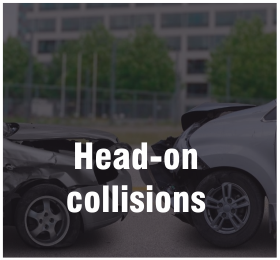
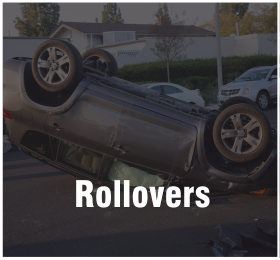
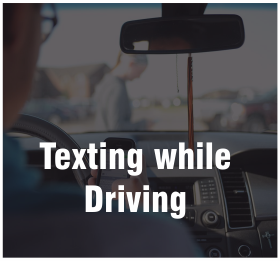
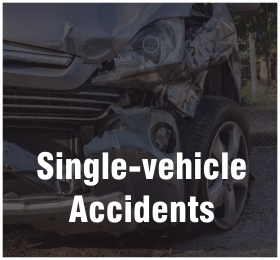
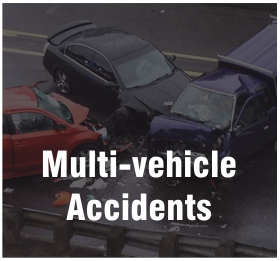
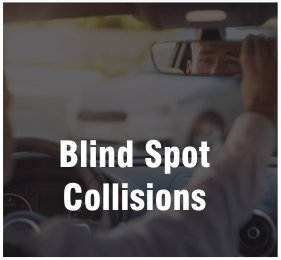
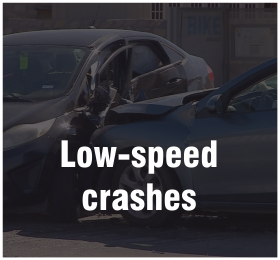
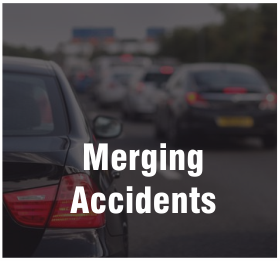



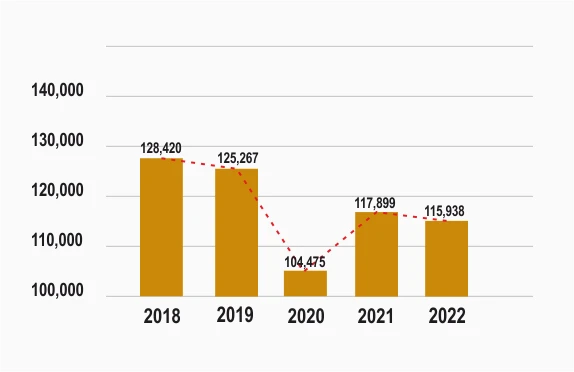
1.webp)
